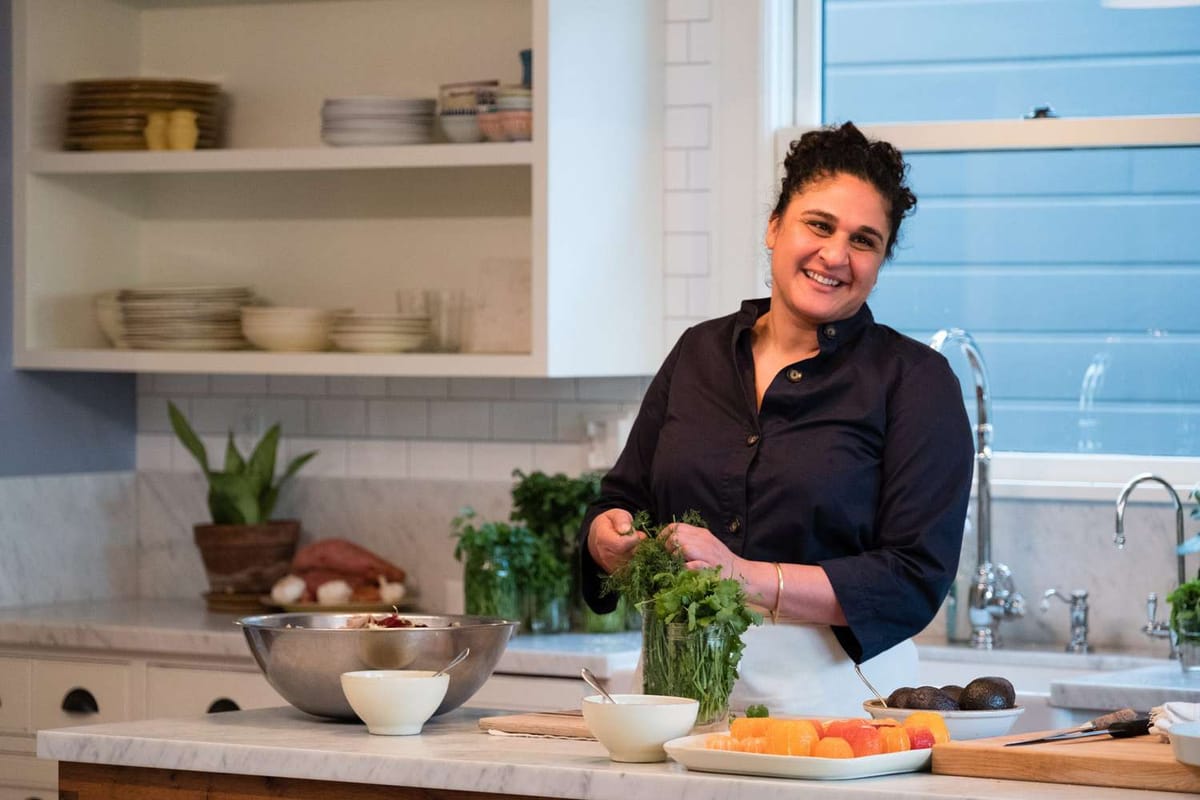Mastering the Elements: Samin Nosrat's Salt, Fat, Acid, Heat

Samin Nosrat transformed how millions of people understand cooking by distilling professional wisdom into four fundamental elements: salt, fat, acid, and heat. Her James Beard Award-winning book, Netflix documentary series, and teaching philosophy developed at Chez Panisse demonstrate that confident cooking comes from understanding principles, not memorizing recipes. When you grasp why salt enhances flavor or how acid balances richness, you stop following recipes blindly and start cooking intuitively.
The Teacher Who Makes Professional Knowledge Accessible
Samin's credentials reflect both professional depth and teaching range. She started at Chez Panisse, where she noticed that amid kitchen chaos, great chefs always returned to four key principles. She spent seven years developing this observation into a comprehensive teaching method, testing it with professional chefs, author Michael Pollan, and middle school students alike. Alice Waters called her "America's next great cooking teacher." NPR dubbed her "the next Julia Child." Her work bridges the gap between professional and home kitchens, making culinary fundamentals accessible to cooks at every skill level.
The Four Elements Explained
Salt enhances flavor by amplifying what's already there. Fat delivers flavor and generates texture. Acid balances richness and brightness. Heat determines final texture. These aren't cooking secrets. They're the framework professional cooks use unconsciously, made conscious and teachable. Master these four variables, and you can cook anything with confidence.
The Book and Show
Salt, Fat, Acid, Heat: Mastering the Elements of Good Cooking (2017) teaches principles before recipes, illustrated by Wendy MacNaughton with watercolors and infographics rather than photographs. Over a million copies sold, James Beard Award winner, perennial New York Times bestseller. The 2018 Netflix documentary series takes each element on a global journey, with Samin traveling to Italy for fat, Japan for salt, Mexico for acid, and Berkeley for heat. Together, book and show demonstrate how different cultures master these elements while making professional cooking knowledge warm and accessible. Explore the book and recipes | Watch on Netflix
Featured Recipes:
Miso-Cured Eggs (Salt)
Samin's miso-cured eggs demonstrate salt's transformative power beyond simple seasoning. Soft-boiled eggs wrapped in miso for four hours develop deep umami flavor and silky texture. The technique showcases how salt penetrates and enhances from the outside in, creating complexity impossible to achieve by seasoning after cooking. The miso itself becomes reusable for soup or additional egg curing, reflecting the resourcefulness of Japanese culinary wisdom.
Read the Miso-Cured Eggs recipe
Basil Pesto (Fat)
Traditional Ligurian pesto exemplifies fat's role in carrying and preserving flavor. Samin's version, adapted from Lidia Caveri, uses mortar and pestle to create the proper texture: pine nuts and garlic pounded to paste, basil broken down completely with salt's help, then enriched with olive oil and cheese. The fat coats pasta perfectly, demonstrating how oil creates the creamy consistency that makes each bite satisfying. The technique honors centuries of Italian wisdom about balancing richness with fresh herb brightness.
Discover the Basil Pesto recipe
Pavo en Escabeche (Acid)
This Yucatecan turkey escabeche showcases acid's balancing power in complex dishes. Adapted from María Concepción Pacho (Doña Conchi), the recipe uses sour orange juice to create the recado marinade that brightens rich turkey and pork meatballs stuffed with egg yolks. The acid cuts through fat while enhancing spices, mint, and aromatics. The accompanying red onion curtido adds additional acidic brightness, demonstrating how Mexican cuisine layers acid throughout dishes for perfect balance.
Explore the Pavo en Escabeche recipe
Persian-ish Rice with Tahdig (Heat)
Samin's Persian-inspired rice demonstrates heat's role in creating texture. The technique involves careful temperature control: high heat to begin crust formation, then low heat for 45 minutes to develop the prized tahdig (crispy bottom). Strategic holes allow steam to escape while oil bubbles up the sides, creating the golden, crunchy layer that contrasts with fluffy rice above. The yogurt-rice mixture at the bottom guarantees crust success, showing how understanding heat transforms simple rice into something extraordinary.
Read the Persian-ish Rice with Tahdig recipe
Why These Principles Matter
Samin's framework addresses what recipes can't teach: the underlying logic of cooking. Written recipes can't adapt to your specific ingredients or equipment. They can't teach you to taste and adjust based on understanding what the dish needs. The four-element approach gives you the checklist experienced cooks use automatically. Once you internalize these principles, recipes become guidelines instead of rigid rules, building the confidence to improvise and cook without constant instruction checking.
Ready to understand cooking at a deeper level? Samin's framework offers the foundation, while ChefTalk's voice-guided cooking helps you apply these principles in real-time. Because the best cooking happens when you understand not just what to do, but why it works.